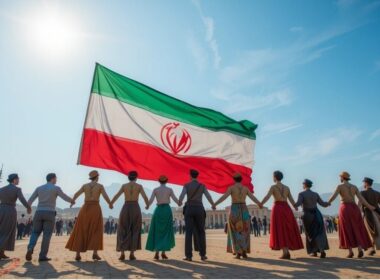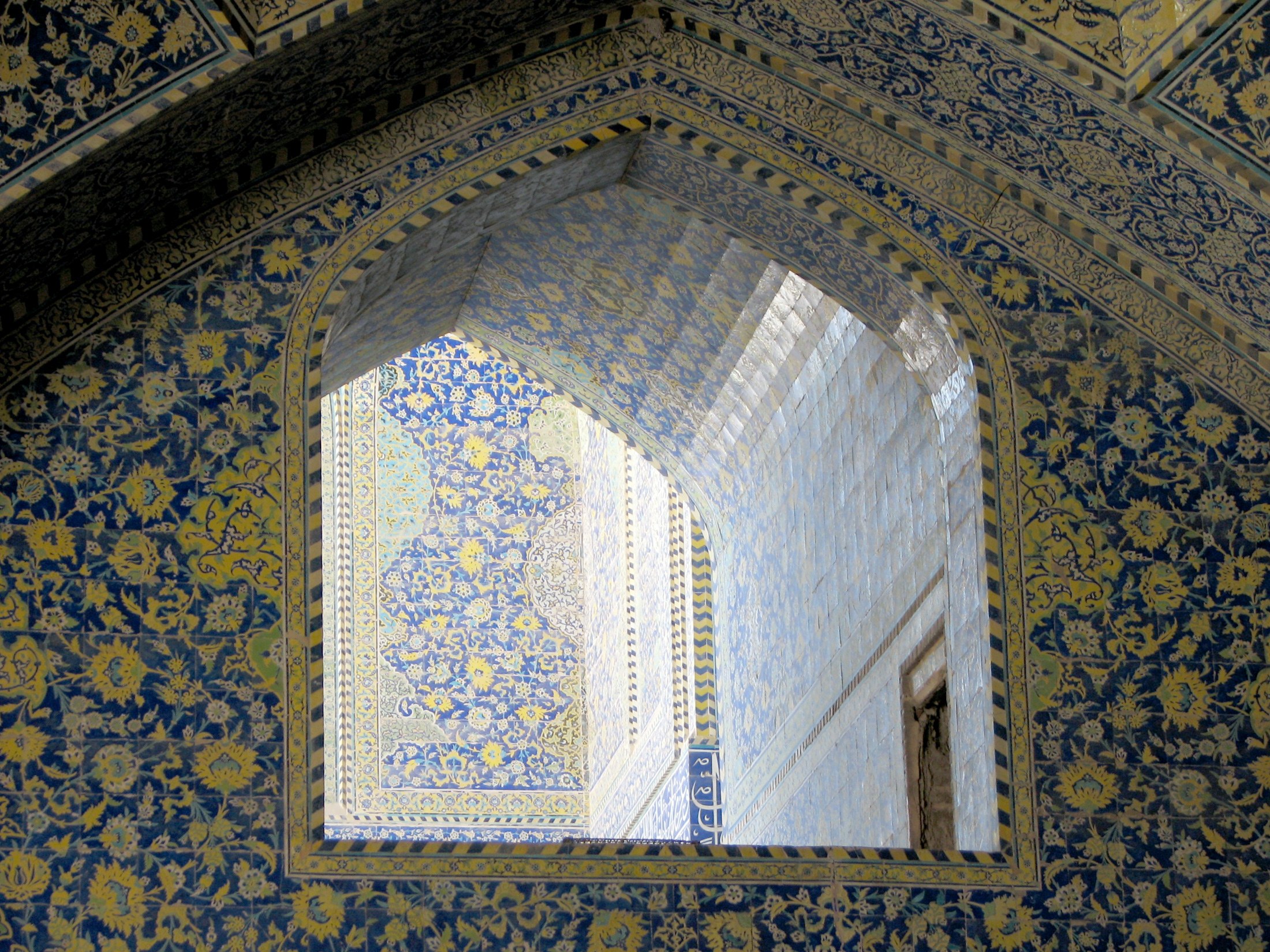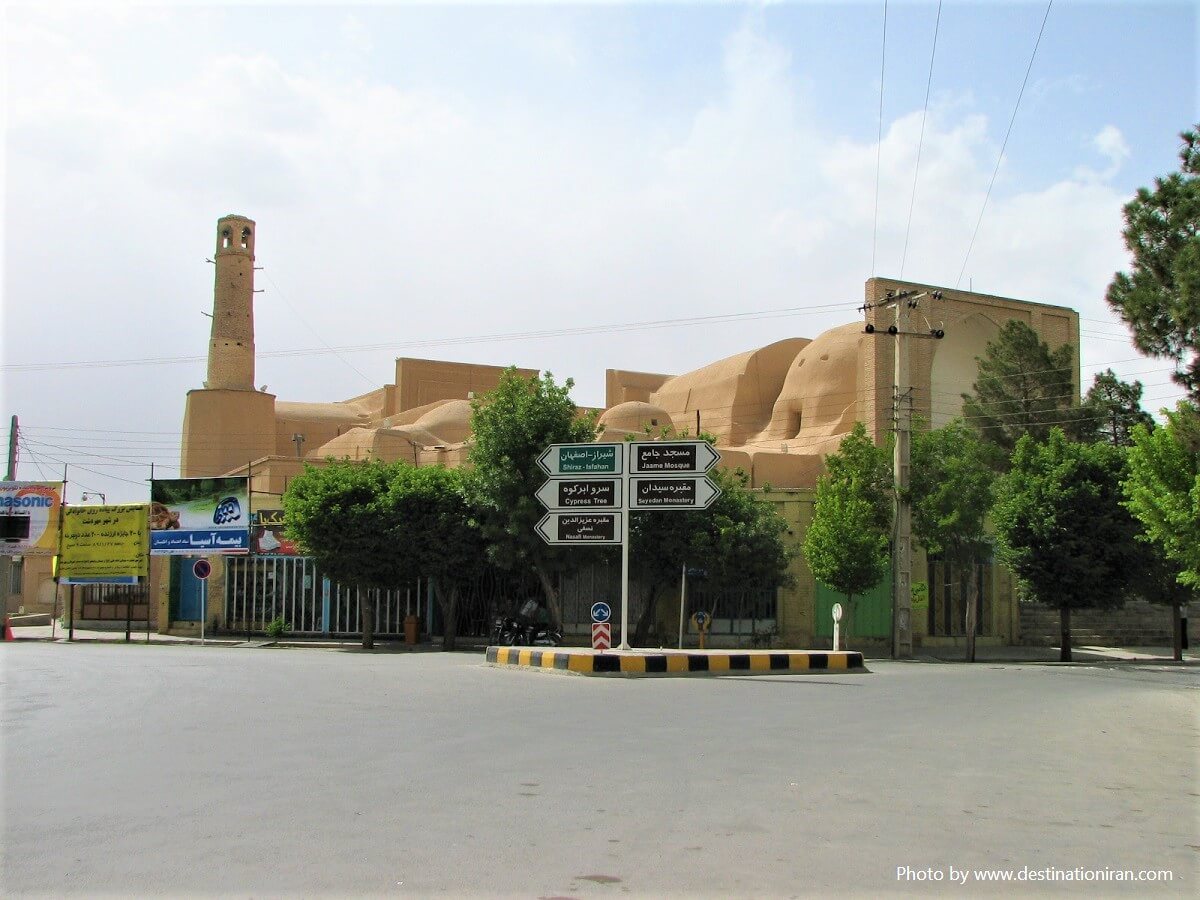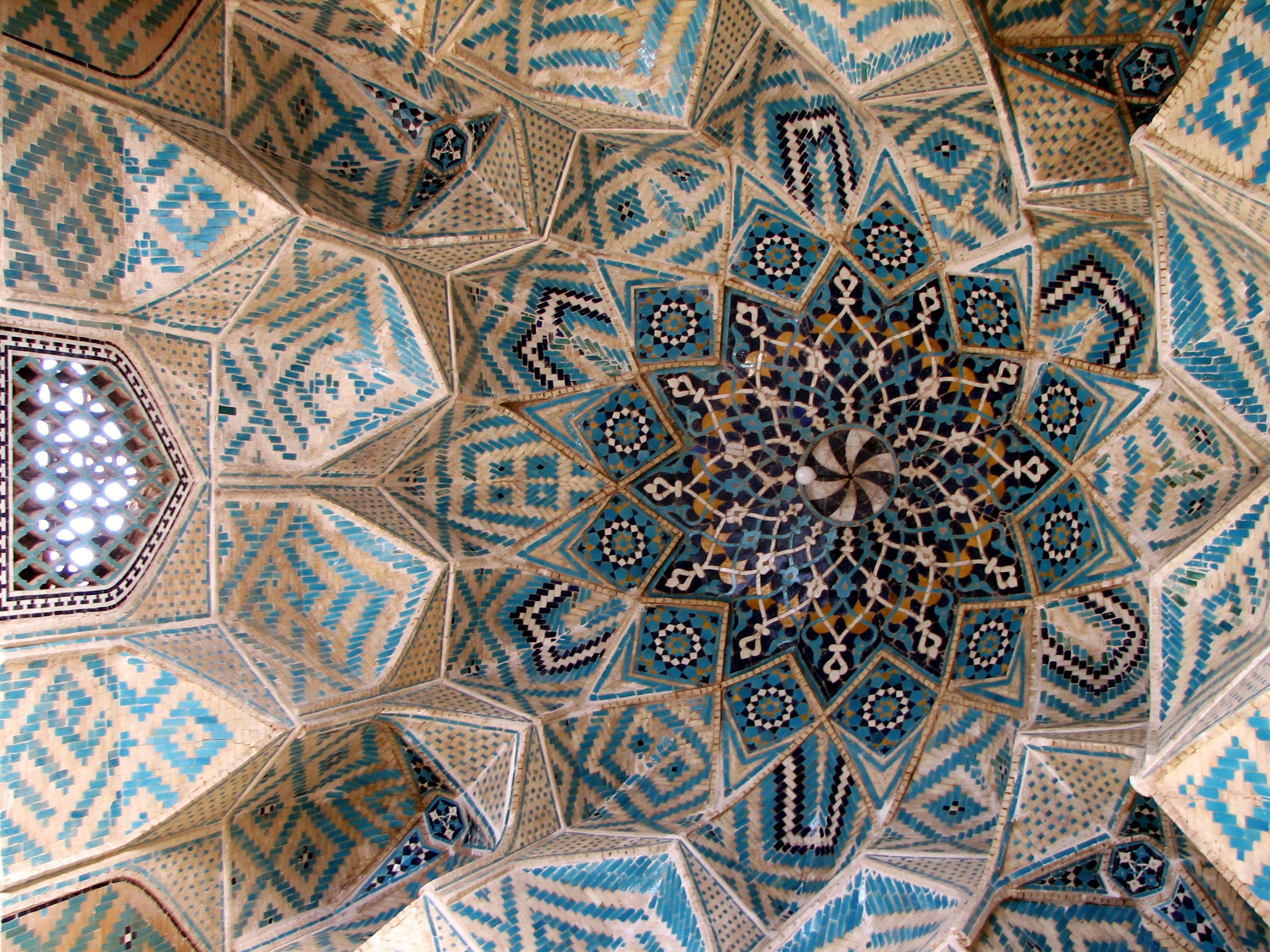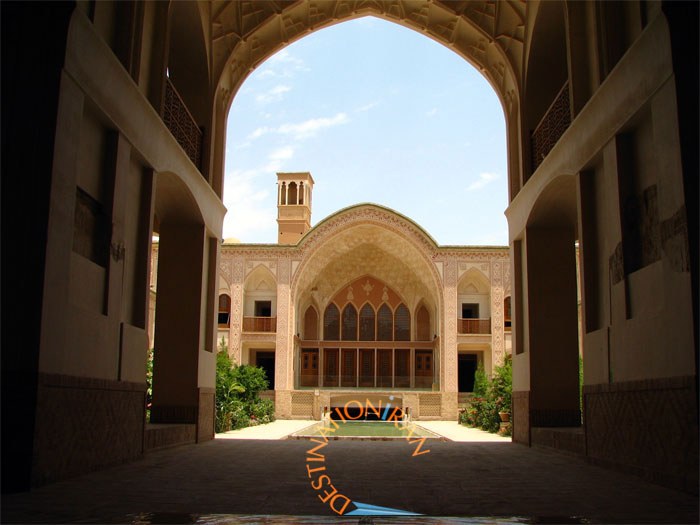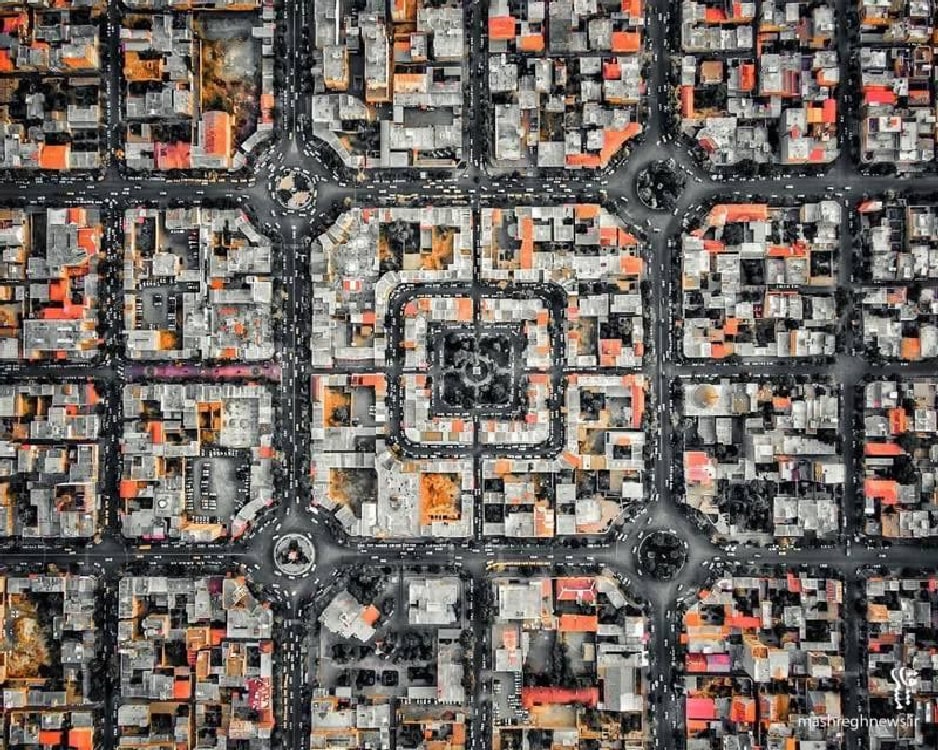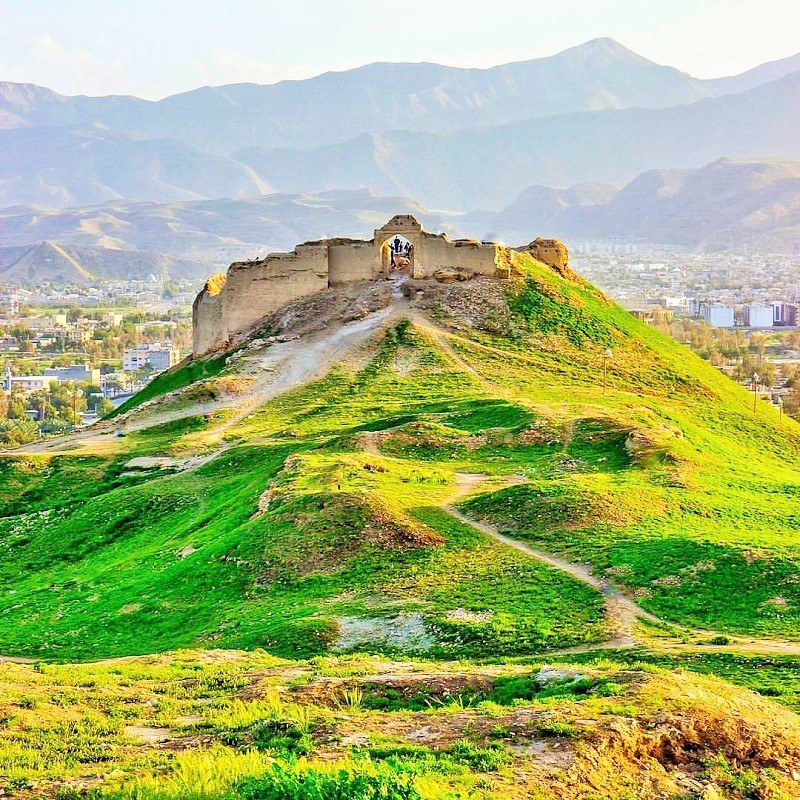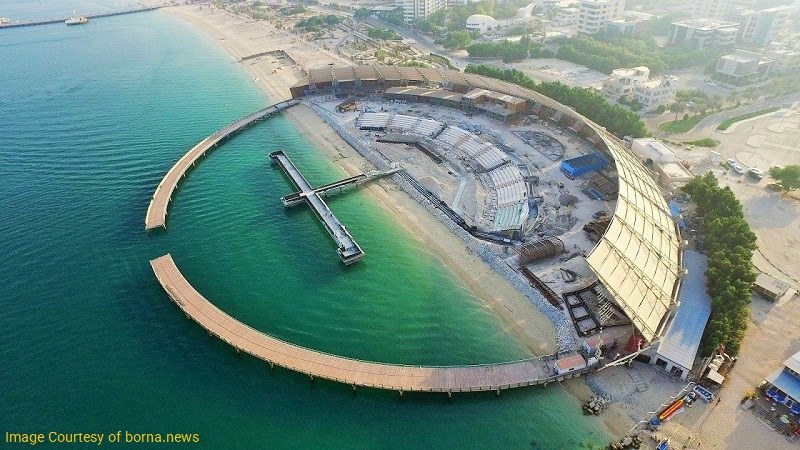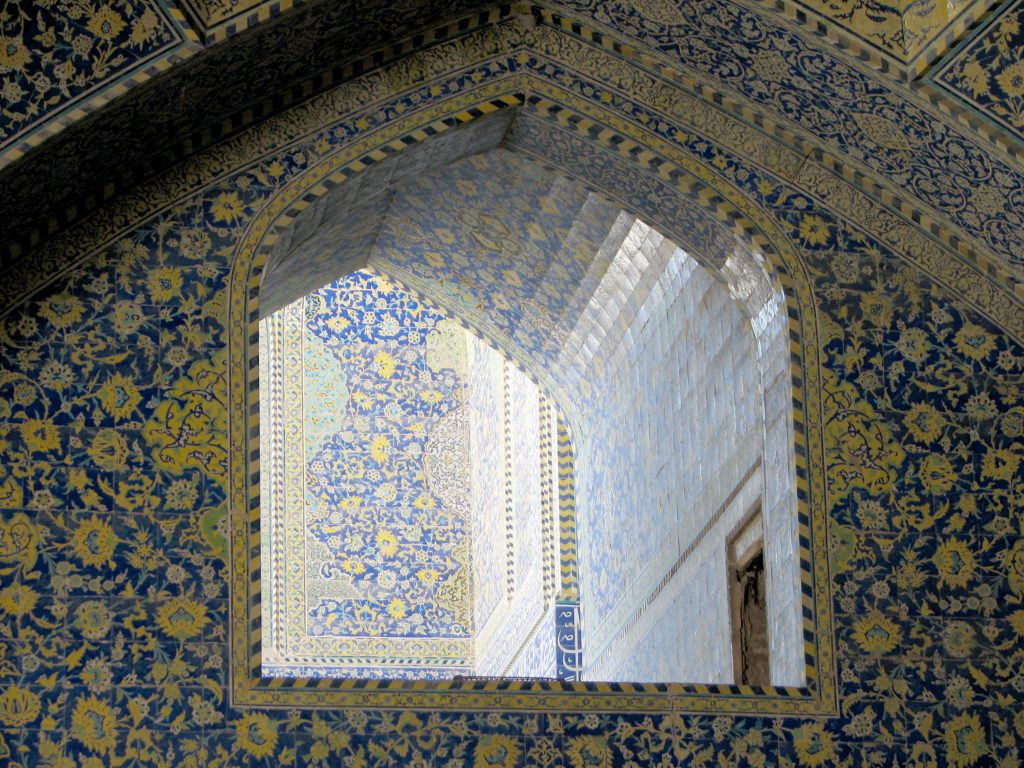
The absolute majority of the international travelers, who plan a trip to Iran, decide to visit Esfahan and its tourist attractions as a must-see destination in their itineraries. It is really worth a tw0-day stay if not more to explore the beauty of the city and find out why it is known for the breath-taking Persian gardens and Islamic architecture.
In terms of buying Iranian handicrafts and souvenirs, this is the best place because of the large variety of available items and the artistic ambiance easily felt everywhere at this city.
Geography of Esfahan
The city is the capital of the central Iranian province by the same name and its altitude is 1573m above sea level. A unique feature of the city that makes it even more attractive is Zayandeh Rud, the 400-km river originating from Zagros mountains at the west of the city and continues to the flat desert area at the east in an area called Gav Khuny Marshland.
The weather is usually very pleasant and moderate. It is not very dry because of the neighboring desert nor humid because of the river going through the city.
The average annual temperature in Esfahan is 27°C and the average annual precipitation is 113 mm. Esfahan is one of the major historical cities of Iran, and many people travel to the city every year. Here are the different ways to travel to
Esfahan:
- By car
Esfahan is 448 km away from Tehran and it takes 4 hours and 45 minutes to travel by car. There are two travel routes from Tehran to Esfahan, an old road and a highway. The old road begins from Tehran to Qom, passing through Salafchegan City and then reaches Esfahan. The new road starts from Tehran highway and reaches from Kashan to Esfahan. By choosing this way, you will pass through Qom, Kashan, and Natanz and you will have a great opportunity to visit these cities.
It is possible to travel by car or bus to Esfahan. Esfahan has two main passenger terminals called Sofeh and Kaveh, where there are daily buses for most of the cities of Iran.
- By airplane
Traveling by airplane from Tehran to Esfahan takes 55 minutes. There are flights from Esfahan to Tehran, Tabriz, Tbilisi, Shiraz, Sari, Assalouyeh, Najaf, Mahshahr, Mashhad, Kish, Kerman, Istanbul, Dubai, Bushehr, Bandar Abbas, Ahvaz, and Abadan.
- By train
Traveling by train from Tehran to Esfahan takes about 7 hours. The main stations of Esfahan Railway are Zarrin Shahr, Hassan Abad, Kashan, Badroud and Dizicheh.
Population & Economy of Esfahan
With a population of 2,400,000 people, Esfahan is ranked 4th among the most populated cities of Iran producing fine carpets, textile, steel, and handicraft. The steel factory at Mobarakeh outside the city is one of the largest in the region.
The economy of Esfahan is based on agriculture, livestock, handicrafts, mining, and industry. Due to the Zayanderud River, agriculture has been a major factor of the economy of Esfahan since ancient times. There are many industrial towns in Esfahan where are located workshops and factories manufacturing industrial parts, food, chemical and pharmaceutical materials.
History of Esfahan
A lot of ancient prehistoric artifacts have been discovered in this city dating back to Palaeolithic period. During Elamites, it was known as Ispadana and under Medes, it became of the major towns of Iran. In Achaemenians and Parthians eras, it was part of the empire and later became a more important city under Sassanians with several military strongholds.
The major flourishing time of Esfahan’s history is under Shah Abbas I, the Safavid king who declared it his capital in the 16th century. A lot was done during that era in Esfahan and the city gained a lot of reputation and popularity among the world travelers of its own time. Roads, bridges and caravansaries were built, territorial integrity of Iran was regained and a lot more. Europeans learned about Persia and its arts and began to visit Iran and Esfahan.
In the 18th century, Afghanistan, which was part of Persia at that time, went rebellious against the central government and launched an attack against the city. The dynasty was toppled down and the capital was moved from this city a number of times before it was finally moved to Tehran in 1795.
Historical Attractions Inside the City
This city has got a lot to offer. You can even visit several world-class sites at the heart of the city in half day!
Here’s the list of several amazing places of visit:
Imam Khomeini Square
Formerly known as Naqsh-e-Jahan Sq (Image of the world), it is a World Heritage Site with all three monuments around it registered in UNESCO’s list. Shah Abbas I, started his royal project of constructing this square and the bazaar as well as the palace and mosques around it in 1612. Visitors to Esfahan love this square and keep coming back there to see and enjoy its beauty.
Imam Khomeini Mosque
Formerly known as Shah Abbas Friday Mosque is one of the monuments built as a part of the royal project ordered by Shah Abbas and situated at the south of the Imam Khomeini Square still being used as a mosque as well as a site for the visitors.
Sheikh Lotfollah Mosque
It is a private mosque constructed as part of the same royal project at the eastern side of the square. This mosque is not very large although its domed chamber is a sizable one. What makes it unique is the artistic and architectural styles applied to it.
Aliqapoo Palace
This is a six-storied building constructed by the order of Shah Abbas I, to be his residence and office. It is located on the western side of Imam Khomeini Square.
Qeysarieh Bazaar
This bazaar is located in the north of Imam Square (Naqsh-e Jahan Square). On the portal, we can see one of the most beautiful paintings of the Safavid era. This bazaar was a center for selling expensive goods during the Safavid period. Representatives of foreign companies had chambers in this bazaar. Qeysarieh Bazaar of Esfahan is one of the biggest bazaars in Iran that has different parts. Each part is dedicated to selling a special kind of goods.
Chehel Sotun Palace
In the mid 17th century, Shah Abbas II ordered a palace to be built for him outside the well-known Imam Square. It has got several columns and huge pool built in the form of a mansion in the middle of a Persian Garden.
Hasht Behesht Palace
Built in the second half of the 18th century, it is a beautiful palace in the middle of the royal gardens and close to the famous Chahar-Bagh street. The square plan of the building and miniature fresco has given a particular beauty to the building.
Jame Mosque
This is a grand mosque originally built as a fire temple which converted to a mosque later. Throughout history in several historical eras, a lot of annexations, restorations and redesign have happened at this mosque. The variety of brickworks, tile works, and mehrab stucco works in this compound are exemplary.
Vank Cathedral
This is a building constructed in the mid 17th century in the Armenian district called Jolfa. It includes a few buildings: Chapel, Museums, Library and other structures and monuments. The mural paintings inside are the works of Iranian Armenians of that period who learned the European arts of their time.
Sio-Se-Pol
This bridge, also known as 33-Arch bridge was built in early17th century, it is still the longest brick-made bridge of the city. Every traveler, who visits Esfahan, will certainly go to this bridge to enjoy walking on it to the other bank of the river.
Pol-e Khajou
Khaju bridge and water dam was built by Shah Abbas II (mid 17th century) and is considered the finest of its type in the entire province. There are two piers on which people can cross the river on foot and a parlor is erected in the center of it for the royal family to enjoy the scenery of the royal gardens and the river flowing eastward.
Shahrestan Bridge
This is the oldest bridge of the city the original construction of which is said to date back to 14th century. It has been the connecting path from the southern bank to the northern one when travelers arrived in Esfahan and wanted to enter the city.
Joui Bridge
This bridge was built in the mid 17th century by Shah Abbas II to irrigate the royal gardens. The aqueduct was made on top of it for this purpose.
Menar Jonban
It is also known as Shaking Minarets. This monument was originally a mausoleum for a mystic figure of 14th century. Later in Safavid period a couple of minarets were added to the top of it making a unique building that resists against severe tremors. Once one minaret is pushed to be shaken, the other one also begins to shake.
Hakim Mosque of Esfahan
This is one of the four-eyvan mosques. The construction dates back to between 1642 and 1663. The architects built this mosque on the ruins of Jour Jiraz Friday Mosque, a monument of 10th century. The beautiful altar of this monument is decorated with Muqarnas and lazuli inscriptions.
Seyed Mosque of Esfahan
This mosque dates back to the Qajar era. Seyed Mosque is very luxurious and magnificent. Decoration of the inside of the mosque is a plaster, mirror and gold plate.
Rakib Khaneh Historic Mansion
The construction of this mansion dates back to the early 16th century, in the Safavid period. It is also known as the Treasury of decorative Arts of Esfahan. Now it is used as a place for the maintenance of riding equipment and the ironmongery of royal horses. This treasure consists of different sections of the art during the Safavid and the Qajar period.
Abbassi Caravanserai
The construction of this monument dates back to the 16th century, in the Safavid era. The building is now a hotel and has several sections for tourists.
Chaharbaq Abbassi
One of the best ways for walking in Esfahan is Chaharbaq Avenue. Chaharbaqs are the avenues surrounded by beautiful and lush trees. In Esfahan City, there are many chahar
baqs that the most beautiful is Chaharbaq Abbassi. The latter starts from Sioseh Pol and reaches north of the city.
Jolfa Neighborhood
This neighborhood is a cobblestone street where people walking commonly. Vank Cathedral is located in this neighborhood.
Chaharbaq School
Other names of this monument are Madar-e Shah School or Sultan Hossein School. This is the latest monument built in the Safavid era. Chaharbaq was one of the religious schools specializing in education and training the mullahs with governmental budget.
Tohidkhaneh
This monument dates back to the Safavid era. It is located behind Ali Qapu Palace. In the past, this monument was used as a kitchen and prison of the palace. During the reign of Shah Abbas I, Tohidkhaneh was a place for the gathering of Sufis. This monument is now located in the courtyard of the Faculty of Architecture of the Esfahan University of Art.
Ali Qoli Aqa Complex
Ali Qoli Aqa was a courtier of Safavid king, Shah Sultan Hussein. He built a complex consisted of a mosque, a bazaar, a mansion and Chahar Suq in Esfahan. Each of these buildings has beautiful tiles and they have formed a beautiful complex together.
Birds Garden
This garden is located about 4 km west of Vahid Bridge and extends along the Najevan Recreation Center. There are 4,000 birds in 130 different species in this garden.
Sarouyeh (Kohan Dej or Ashraf Mound)
This monument is 7,000 years old. In fact, it is the remnant of a large library. There were many books in this library, and the Arabs destroyed it during their invasion of Iran. Today, nothing has remained from that glory, but just a mound.
Historical Attractions outside the City
Here’s a list of these places of visit:
Fire Temple of Esfahan
Atashgah Mountain (Fire Temple Mountain) is located 7 km west of Esfahan, on the same way leading to Menar Jonban. The height of this mountain is about 1,680 meters above sea level. At Sassanian times, Iranians built a fire temple on top of this mountain. The fire temple is made of very large and thick sun-dried bricks.
Esfahan Natural Attractions
Here’s a list of interesting places to visit:
Mount Soffeh
This mountain is located south of Esfahan. It is a symbol of Esfahan City. There are recreational facilities on this mountain.
Varzaneh Village
This region is located in the southwest of Naein, near Gavkhouni Wetland. This area will be enjoyable for those who love the desert and the starry sky of the night. An interesting thing about Varzaneh is the clothing of the women wearing the white chador. We should mention that some women wear Chador in Iran and the common color for that is black.
Khur and Biabanak Desert
This area is located in the east of Esfahan Province. It has sandy mounds and unique nature. Khur and Biabanak Desert is a complex of salt lakes, small and large mounds and salt waterfall.
Mesr Desert
This area has good conditions for riding camel and safari. The desert is located 45 kilometers from Khandaq City. As it is in short distance from Mesr Village, it has an ideal situation for the resting of desert tourist.
Maranjab Desert
This area is very similar to Mesr Desert. Shah Abbasi Caravanserai is located in this area. There is also the possibility to stay in this desert overnight. Aran and Bidgol Salt Lake, Sargardan Island, and Dastkan Well are some attractions close to Maranjab Desert.
Ab Malakh Waterfall (Takht Soleiman Waterfalls)
This waterfall is located 60 kilometers from Semirom City. It consists of two main parts, the source of the waterfall and green dams. The water of this waterfall is a natural pesticide to kill grasshoppers.
Parian Cave
This cave is located 8 km from Abyaneh Village. It has 11 halls. The entry to this cave requires caving knowledge and expertise.
Fereydoun Cave
This cave is located 8 km from the Peykan Village and 17 km southeast of Esfahan. Visiting the inside of this cave is a little bit hard and needs to have enough experience in caving.
Khur Salt Lake of Esfahan
The lake is located 40 km from the city of Khur and Biabanak. Its area is 2000 kilometers and it has salt polygons on its surface.
Map of Esfahan





